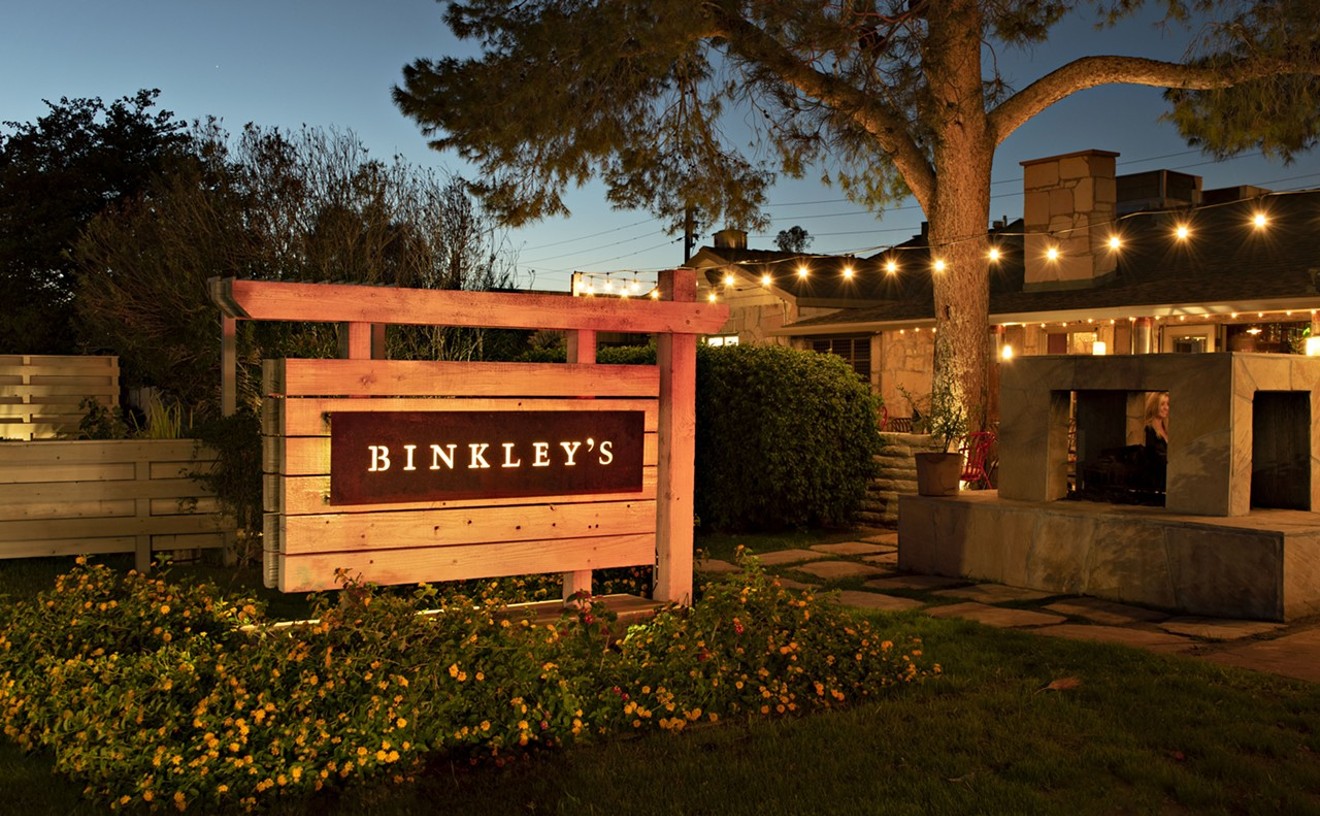These days, instead of lox and schmears, the former bagel shop at Eighth Street and Camelback serves south-of-the-border cuisine -- way south -- not just the central and southern Mexican delicacies available at a smattering of restaurants in Phoenix. (Most Mexican food, as Phoenicians know it, is the kind served in border towns.) And it's not just the food that makes this place so unique; it's a one-of-a-kind Latin meeting ground.
While it may be hard to understand the employees and customers engaging in lively conversation about their respective homeland cooking and customs, it sure is a fun learning experience -- and an even better culinary one.
At the top of the Latin cuisine faculty is head maestro Gonzalo "Chalo" Quiros. The 45-year-old Costa Rican bought the place recently and has already assembled a team of international food experts -- of sorts. The former schoolteacher, who has lived in the U.S. for nine years, is a real entrepreneur, and a multi-tasker. He runs a remodeling business and rents out a salon on West Camelback Road for weddings and quinceañeras. Along with food, he sells all sorts of Latin American flags and trinkets in his deli.
The place is colorful. There's an Argentinean horse-riding outfit pinned to a wall and South American art complemented by the colorful walls and other Latino memorabilia. People from all over gather to watch TV en Español and discuss who has the best fútbol team and -- more to the point -- who has the best empanadas.
"We sell Argentinean empanadas, but the Chilean ones are better," says Hector Lopez, a 33-year-old waiter from Veracruz, Mexico. (He says this like he's letting you in on a secret.) "The Argentineans say they are better, the Chileans say they are better," Lopez says in a singsong way, shaking his head and rolling his eyes. "But we sell the Argentinean ones. They're better known. They sell better."
In his off time, Lopez fixes up houses for Quiros. But he makes it clear that this is his favorite job and he'll be happy to tell you anything you need to know about any type of food from south of several borders. The former biologist will also tell you that most of the food is the same. "Just the names are different," he says, which can create confusion, even for him. He recalls ordering enchiladas and getting a tostada. The trick, he says, is to order a tostada. Then you get an enchilada! Apparently, the names are switched in Central America.
Lopez, the fly-on-the-wall waiter, has a front-row view of the multicultural activity buzzing through the place and is happy to share his observations with anyone willing to listen. Every visit is a learning experience. Lopez will explain how to make just about every item on the menu, as well as others from different countries not found at the Panamerican. He even describes the ideal setting in which to prepare certain dishes or desserts. Then, with lots of hand gestures, he finishes the lesson with an imaginary bite of his creation, saying, "A su madre!" Normally, that is a pretty bad thing to say in Spanish, but in this case, Lopez says it passionately, and the meaning is good.
Lopez acts as a sort of local ambassador to the other Latin American countries besides Mexico. It's a refreshing perspective in a town whose otherwise ethnocentric palette is geared toward everything Mexican. Yes, there is activity south of Chiapas. Lots of it.
"Los Colombianos, they talk about their soups. Venezuelanos talk about gorditas de beans and cheese," Lopez says. But how do you explain a tamale the size of a large burrito stuffed with a chicken leg and wrapped in a plantain banana leaf? He just shrugs his shoulders and walks away. These aren't exactly the kind you get for $5 a dozen at the Food City parking lot.
"That's how we make them in Guatemala," says Ingrid Valentine, the resident tamale maker and cook. She makes the oversize and fluffier treat every Monday afternoon in the back of the restaurant. It's a long process that takes her most of the day. She wraps things up by cooking the tamales in a small covered patio just outside.
Latin Americans come from all over the Valley for home-cooked meals that remind them of home. Sometimes they leave with more than just a reconnection to the motherland. "They take the menus," says Lenore Trevino, Quiros' American (but very Latin) girlfriend. "Everybody's stealing them," she says as she explains to Quiros in Spanish that she had to print new ones on her home computer because the printer charged a whopping $5 to color print and laminate. "I guess, maybe the people, they want a keepsake. Maybe they take them home as placemats," he says, laughing.
They probably do.










